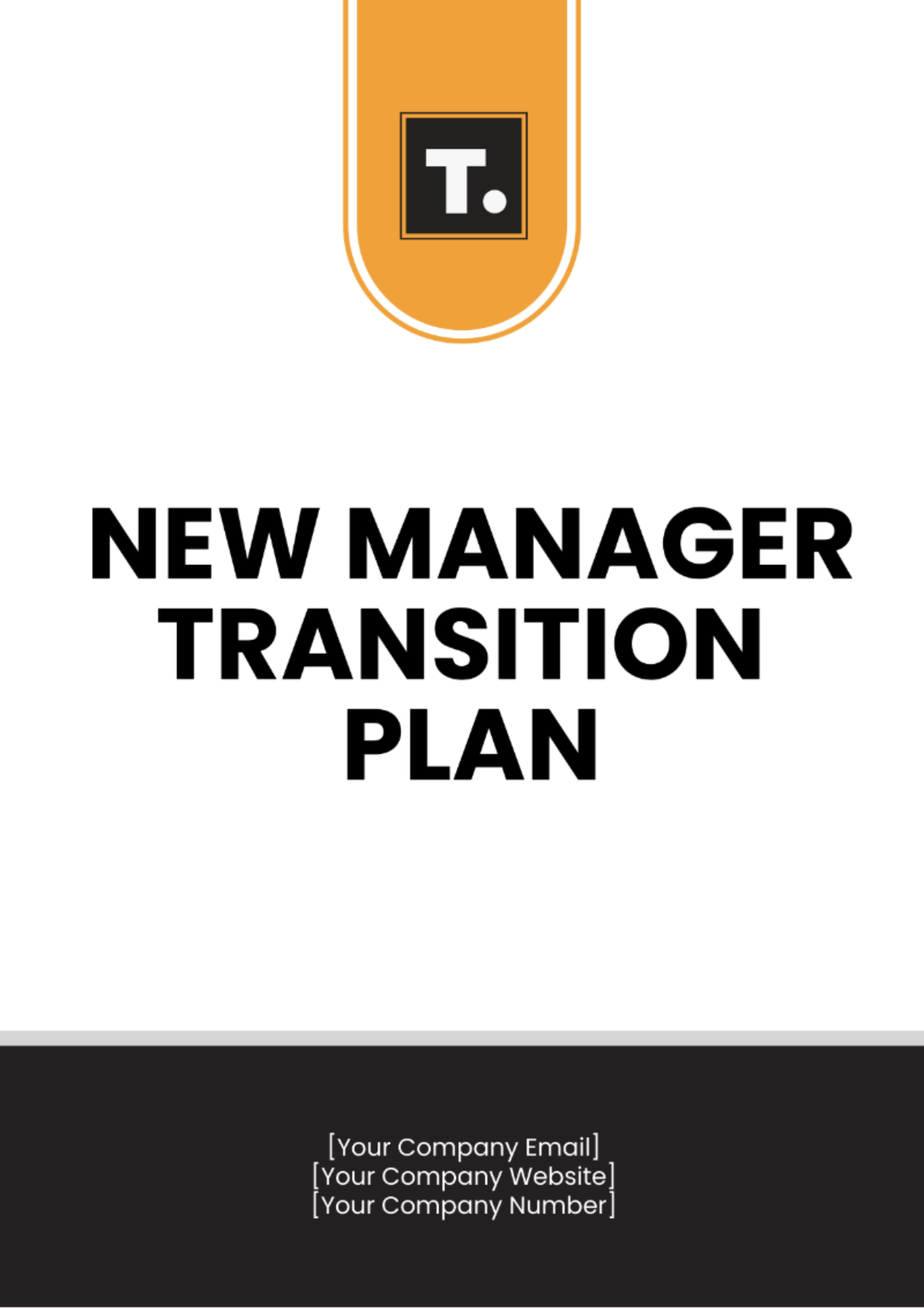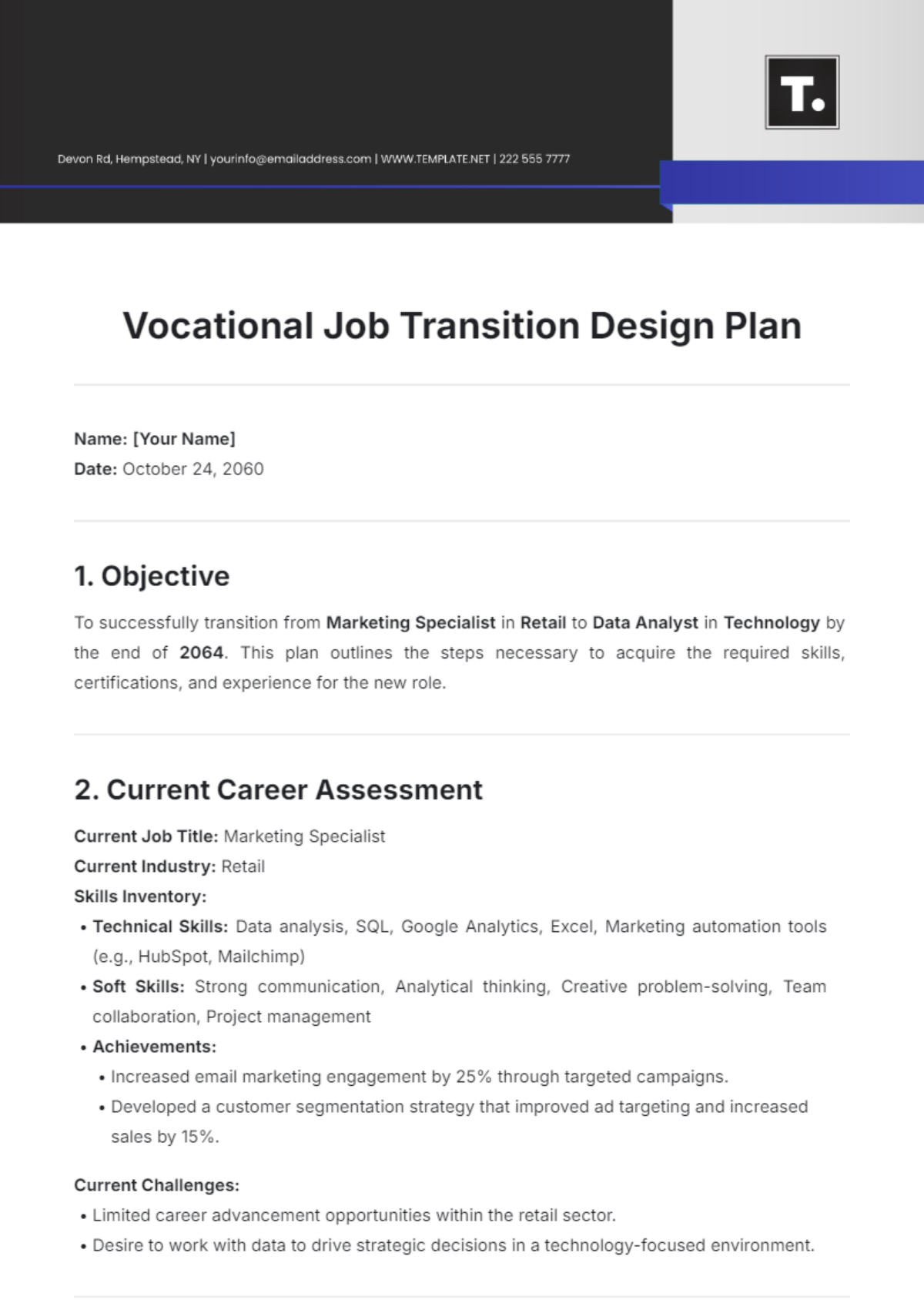Remote Work Transition Plan
Prepared By : | [YOUR NAME] |
Email: | [YOUR EMAIL] |
Date: | [DATE] |
I. Executive Summary
In light of recent global shifts towards remote work arrangements, [YOUR COMPANY NAME] recognizes the need for a structured approach to facilitate a smooth transition from traditional office-based work to remote or telecommuting setups. Our Remote Work Transition Plan is designed to provide comprehensive guidance, training, and support to employees and managers alike, ensuring the continuity of productivity, collaboration, and employee well-being in a virtual work environment. By embracing remote work practices, we aim to enhance organizational resilience and flexibility, positioning our company for sustained success in the digital age.
II. Transition Plan Overview
A. Goals and Objectives
Maintain Productivity: Ensure that employees remain productive and focused while working remotely, without compromising on deliverables or quality of work.
Enhance Collaboration: Foster effective collaboration among remote teams through the utilization of appropriate tools and communication channels.
Promote Employee Well-being: Prioritize the mental and physical well-being of employees by providing support and resources to help them thrive in a remote work environment.
Increase Organizational Resilience: Build resilience within the organization by adapting to remote work practices, thereby mitigating risks associated with disruptions to traditional office-based work.
B. Scope
This plan encompasses all employees and managers at [YOUR COMPANY NAME] who will transition from traditional office-based work to remote work. It ensures comprehensive support and guidance for the entire workforce during the transition period. The scope includes facilitating the adjustment to remote work practices and ensuring continuity of productivity and collaboration.
III. Implementation Strategy
A. Phases and Timeline
Phase | Description | Timeline |
|---|---|---|
Phase 1 | Initial Planning and Assessment | 2 Weeks |
Phase 2 | Training and Resource Allocation | 4 Weeks |
Phase 3 | Full Transition to Remote Work | Ongoing |
B. Key Roles and Responsibilities
Identify and assign roles to ensure a smooth transition:
Key Role | Responsibilities |
|---|---|
Project Manager | Oversees the entire transition process, coordinating efforts across departments and ensuring timely implementation. |
IT Support | Provides technical support and resources to facilitate the seamless integration of remote work technologies. |
HR | Manages training initiatives, employee communication, and well-being support programs throughout the transition. |
Team Leaders | Act as liaisons between management and remote teams, ensuring effective communication, collaboration, and productivity. |
IV. Communication Plan
A. Communication Channels
Email: For formal communication, announcements, and sharing of documents.
Video Conferencing: Utilizing platforms like Zoom or Microsoft Teams for virtual meetings, presentations, and team collaborations.
Instant Messaging: Implementing tools such as Slack or Microsoft Teams for quick and informal communication among team members.
Company Intranet: Serving as a centralized hub for sharing important updates, resources, and policies related to remote work.
B. Frequency and Type of Communication
Weekly Team Meetings: Scheduled virtual meetings to discuss project progress, challenges, and goals.
Bi-weekly Check-ins with Managers: Individual meetings between managers and team members to provide feedback, address concerns, and ensure alignment with objectives.
Monthly Company-wide Updates: Company-wide announcements and updates regarding business performance, strategic initiatives, and remote work policies.
V. Training and Support
A. Training Programs
Provide comprehensive training programs for all employees and managers, including:
Training Program | Description |
|---|---|
Remote Work Best Practices | Guidance on maintaining productivity, managing time effectively, and overcoming common challenges associated with remote work. |
Use of Remote Collaboration Tools | Hands-on training sessions on utilizing collaboration platforms such as Slack, Microsoft Teams, and Google Workspace. |
Cybersecurity and Data Protection | Education on cybersecurity best practices, data encryption methods, and strategies to mitigate risks associated with remote work environments. |
Employee Well-being and Mental Health | Resources and support services aimed at promoting work-life balance, stress management techniques, and maintaining social connections while working remotely. |
B. Support Resources
24/7 IT support: Access to dedicated IT support personnel to address technical issues, troubleshoot software/hardware problems, and provide guidance on remote work technologies.
Access to online training materials: A repository of online training modules, tutorials, and resources accessible to employees at their convenience to enhance their skills and knowledge related to remote work practices.
Well-being resources and support: Access to counseling services, employee assistance programs, and wellness initiatives designed to support the mental and physical well-being of employees during the transition to remote work.
VI. Monitoring and Evaluation
A. Performance Metrics
To measure the effectiveness of the Remote Work Transition Plan, [YOUR COMPANY NAME] will track the following performance metrics:
Employee productivity levels: Quantitative assessments of individual and team productivity through key performance indicators (KPIs) and project milestones.
Collaboration tool usage: Analysis of usage metrics for remote collaboration tools, including frequency of usage, active users, and engagement levels.
Employee satisfaction surveys: Regular surveys to gather feedback from employees regarding their remote work experience, satisfaction levels, and areas for improvement.
IT support requests and resolutions: Monitoring of IT support tickets, response times, and resolution rates to ensure timely assistance and address technical issues effectively.
B. Continuous Improvement
Consistently conduct thorough reviews and make necessary updates to the Remote Work Transition Plan by incorporating feedback and analyzing performance metrics, to guarantee its continued effectiveness and ensure that it remains aligned with the overarching objectives of the company.
VII. Conclusion
By adhering to the guidelines and strategies outlined in this Transition Plan, [YOUR COMPANY NAME] is well-prepared to manage the transition to a remote work environment effectively. This will ensure that we maintain business continuity, achieve high levels of productivity, and enhance employee satisfaction throughout the organization.
































